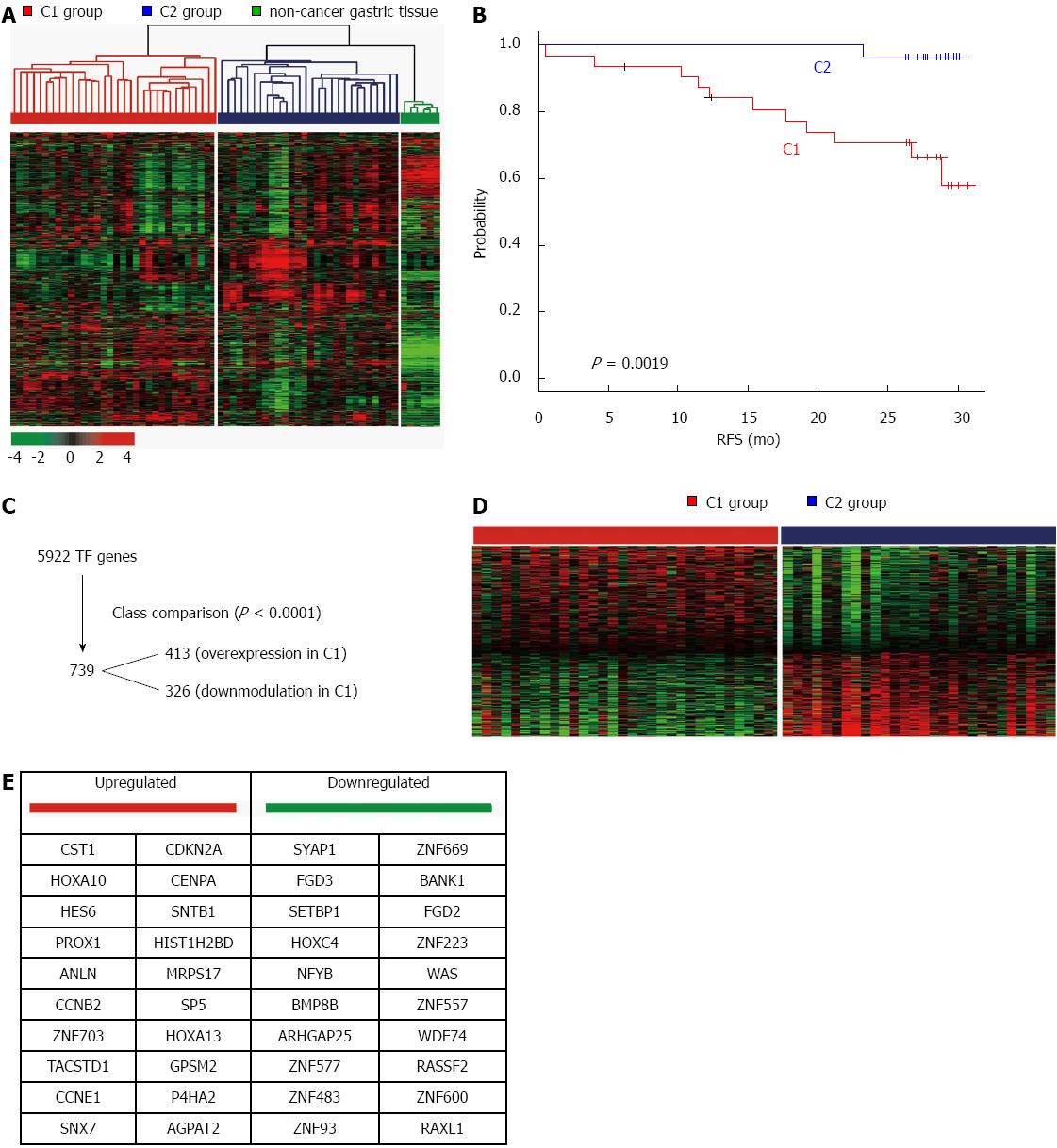Copyright
©2013 Baishideng Publishing Group Co.
World J Gastroenterol. Nov 7, 2013; 19(41): 7078-7088
Published online Nov 7, 2013. doi: 10.3748/wjg.v19.i41.7078
Published online Nov 7, 2013. doi: 10.3748/wjg.v19.i41.7078
Figure 1 Two prognostic groups of patients with gastric cancer, C1 and C2, have distinct mRNA expression patterns.
A: mRNA expression patterns of gastric cancer and non-cancer gastric tissue are depicted in a heat map. Hierarchical clustering revealed two subtypes of gastric cancer, C1 and C2. The data are presented as a matrix in which rows represent individual mRNAs and columns represent each tissue. The color red represents relatively high expression levels and green reflects lower expression levels; B: Kaplan-Meier plot of relapse-free survival (RFS) revealed C1 and C2 represented poor- and good-prognosis gastric cancer tissues, respectively; C: Workflow of C1-specific 739 transcription factors (TFs) selected from a total 5,922 TFs; D: Hierarchical clustering of gene expression for 739 TF genes; E: List of top 20 up- and down-regulated TF genes in the C1 group.
- Citation: Lim JY, Yoon SO, Seol SY, Hong SW, Kim JW, Choi SH, Lee JS, Cho JY. Overexpression of miR-196b and HOXA10 characterize a poor-prognosis gastric cancer subtype. World J Gastroenterol 2013; 19(41): 7078-7088
- URL: https://www.wjgnet.com/1007-9327/full/v19/i41/7078.htm
- DOI: https://dx.doi.org/10.3748/wjg.v19.i41.7078









